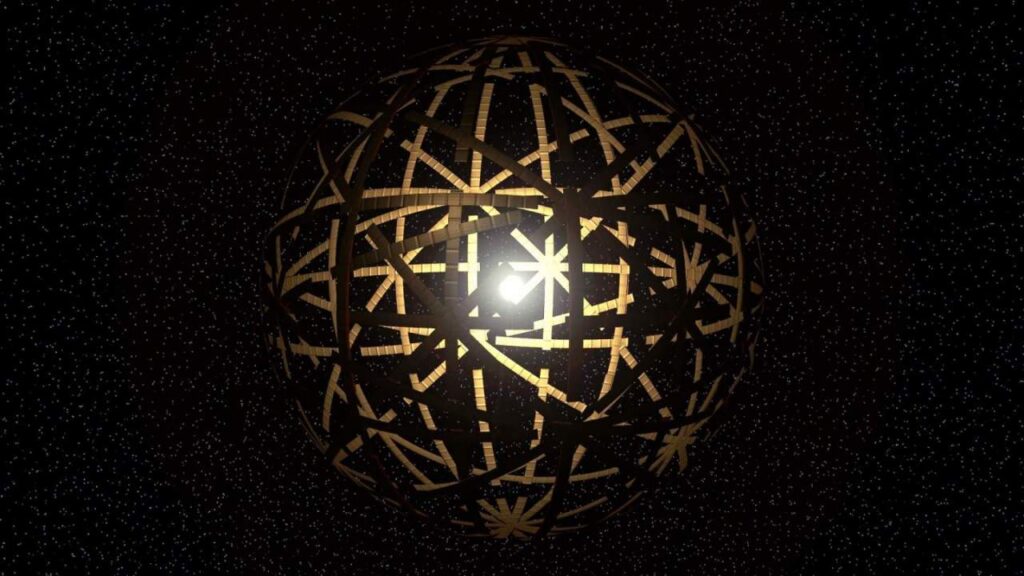The entirety of our planet’s energy – regardless of whether it’s acquired from food, petroleum products, or sustainable sources – eventually comes from the sun. Sun powered radiation advances 93 million miles across space to course upon the planet’s surface. Once here, it’s taken up by plants which are then consumed by creatures, and the cycle proceeds. As verified by LiveScience, this cycle is called photosynthesis – and it drives each living thing on Earth.
The difficulty is that main a little level of the Sun’s complete energy advances toward Earth’s surface (by means of the University of Illinois). By far most of the Sun’s beams are lost to the territory of room, as per National Geographic. Until now, this hasn’t been an issue. Nat Geo noticed that the energy present on our planet surpasses our requirements – however that may not forever be the situation.
That possibility was the motivation for a psychological test concocted by Freeman Dyson which eventually became known as the Dyson circle (through Earth Sky). These circles, and comparable developments, are tremendous megastructures that could be worked around a star trying to assemble the entirety of a planetary framework’s accessible energy.
Growing energy consumption
Since the 1800s, all out human energy utilization has expanded from 5,600 terawatt-hours to more than 170,000 and there’s no foreseeable endgame. Additionally, the pace of increment is itself expanding. As our populace and mechanical capacity develops, so too do our energy necessities, as Nat Geo noted. Given sufficient opportunity, those prerequisites could surpass what’s accessible on our planet, expecting us to search somewhere else for power.
The sun is an apparently unending inventory of energy, even at this huge distance. Consistently, more sun powered energy strikes the outer layer of the Earth than the entire of humankind will consume in a year. You may believe that implies we’ll never overpower Earth’s accessible energy, yet that probably won’t be the situation. The greatest restricting variable in utilizing limitless measures of the sun’s energy is our capacity to change over it successfully into useable power (by means of Fortum). This is the place where the Dyson circle could prove to be useful.
The World, The Flesh, and The Devil by John Desmond Bernal
In 1929, John Desmond Bernal distributed his story “The World, The Flesh, and the Devil.” The story investigates the manners in which humankind may change in the future because of science and innovation, altering our bodies, and investigating space.
Maybe the book’s most prominent achievement is the development of enormous scope space environments for pilgrims to live inside. These flying natural surroundings were envisioned as huge circles with individuals living along their inside surface like a planet flipped back to front.
Before Bernal, nobody that we’re mindful of at any point envisioned huge space-based natural surroundings which were round in shape and impersonated Earth-like conditions. Bernal’s creation has propelled ages of researchers and narrators hoping to envision the eventual fate of mankind as we spread toward the stars.
These designs have displayed in films including “2001: A Space Odyssey” and “Elysium,” just as TV shows like “Star Trek” and “Babylon 5.” NASA even supported scientists during the ’70s to sort out if we would assemble huge space natural surroundings.
Star Maker by Olaf Stapledon
Under 10 years after Bernal created his renowned natural surroundings, Olaf Stapledon composed his most experimentally significant work, “Star Maker.” While a portion of his different stories have been adjusted to the screen, “Star Maker” influenced science by taking Bernal’s plan to the following stage. At the hour of its composition, it was cherished by other sci-fi makers including type illuminating presences like Arthur C. Clarke. It follows a storyteller who is moved through space to investigate different spots, experiencing the nominal star creator.
While the book is to a great extent a philosophical investigation of humankind, it presented various fascinating thoughts regarding the manner in which social orders could develop themselves in the endless scopes of our universe. Over his movements, the storyteller experiences outsider species, and significantly, tremendous megastructures encompassing a star.
The possibility of a megastructure encompassing a star would ultimately advance into incalculable other sci-fi stories (through Goodreads). In any case, the impact of that thought didn’t end in artistic circles. Many years after the fact, researchers would take the possibility of megastructures around stars and keep thinking about whether they could truly exist.
Freeman Dyson popularizes the Dyson sphere
Taking motivation from Olaf Stapledon, and potentially John Desmond Bernal, Freeman Dyson formalized the possibility of heavenly megastructures in his paper “Quest for Artificial Stellar Sources of Infrared Radiation,” distributed in the diary Science.
In this short paper, Dyson recommended that designs like those proposed in Stapledon’s novel may be an inescapable outcome of long-standing progressed species, and that looking for their signs could uncover savvy life somewhere else in the universe. The thought expands on the idea that, assuming an animal groups tries not to be cleared out, their energy utilization should proceed to increment, and in the end they would have to track down ways of obtaining a huge part of their parent star’s nuclear power. Assuming that is the situation, we ought to have the option to see indications of enormous energy-getting structures when checking out the stars with our telescopes.
The paper recommended the chance of Dyson circles, yet in addition illustrated manners by which we could possibly track down them. Dyson suggested the viewpoint that the as of late started SETI program may search for indications of heavenly megastructures notwithstanding radio transmissions in the quest for extraterrestrial life. Because of this paper, Dyson procured recently discovered notoriety and his name was inseparably connected with the reason, whether or not he preferred it. Along these lines, the well known idea of the Dyson circle was conceived, and sci-fi was always different.

